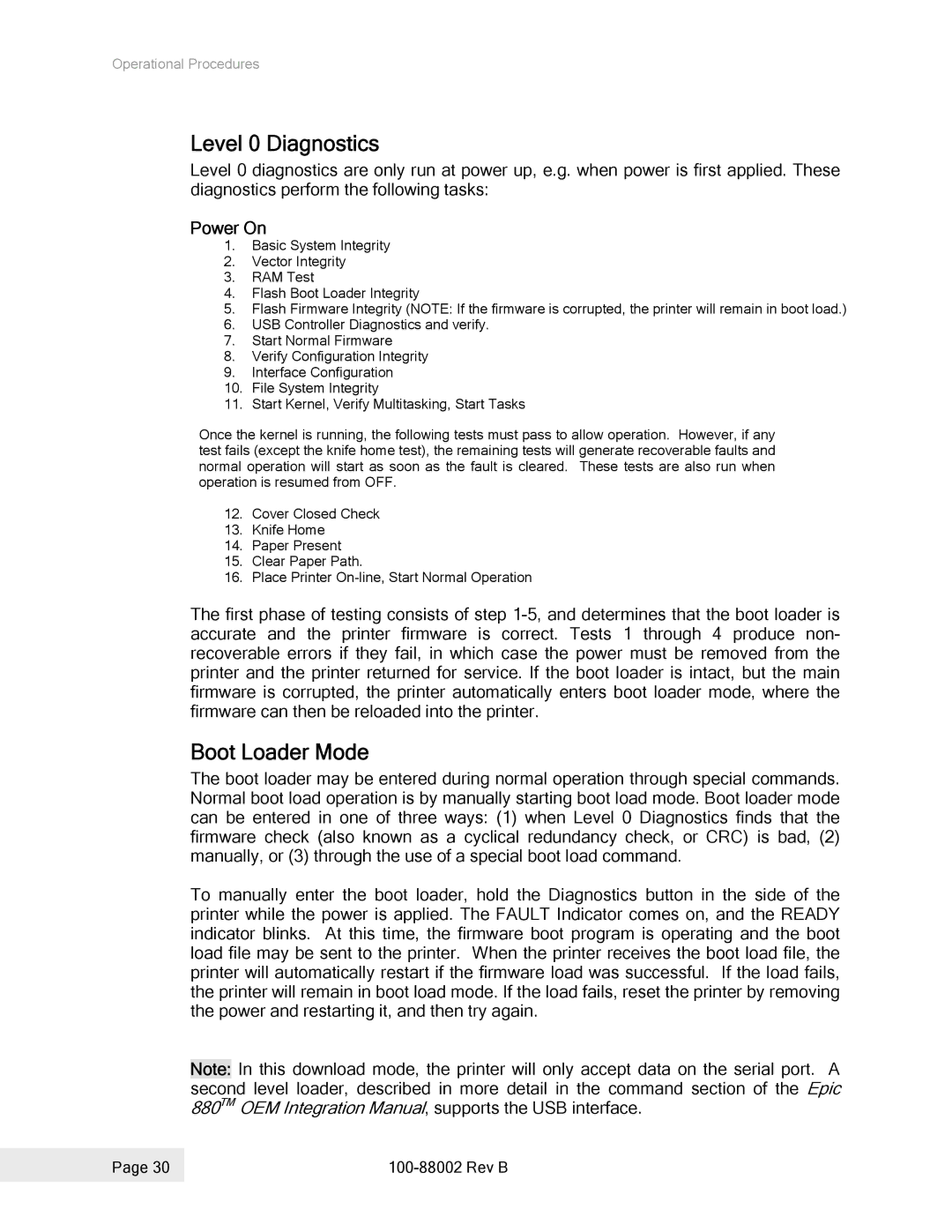Operational Procedures
Level 0 Diagnostics
Level 0 diagnostics are only run at power up, e.g. when power is first applied. These diagnostics perform the following tasks:
Power On
1.Basic System Integrity
2.Vector Integrity
3.RAM Test
4.Flash Boot Loader Integrity
5.Flash Firmware Integrity (NOTE: If the firmware is corrupted, the printer will remain in boot load.)
6.USB Controller Diagnostics and verify.
7.Start Normal Firmware
8.Verify Configuration Integrity
9.Interface Configuration
10.File System Integrity
11.Start Kernel, Verify Multitasking, Start Tasks
Once the kernel is running, the following tests must pass to allow operation. However, if any test fails (except the knife home test), the remaining tests will generate recoverable faults and normal operation will start as soon as the fault is cleared. These tests are also run when operation is resumed from OFF.
12.Cover Closed Check
13.Knife Home
14.Paper Present
15.Clear Paper Path.
16.Place Printer
The first phase of testing consists of step
Boot Loader Mode
The boot loader may be entered during normal operation through special commands. Normal boot load operation is by manually starting boot load mode. Boot loader mode can be entered in one of three ways: (1) when Level 0 Diagnostics finds that the firmware check (also known as a cyclical redundancy check, or CRC) is bad, (2) manually, or (3) through the use of a special boot load command.
To manually enter the boot loader, hold the Diagnostics button in the side of the printer while the power is applied. The FAULT Indicator comes on, and the READY indicator blinks. At this time, the firmware boot program is operating and the boot load file may be sent to the printer. When the printer receives the boot load file, the printer will automatically restart if the firmware load was successful. If the load fails, the printer will remain in boot load mode. If the load fails, reset the printer by removing the power and restarting it, and then try again.
Note: In this download mode, the printer will only accept data on the serial port. A second level loader, described in more detail in the command section of the Epic 880TM OEM Integration Manual, supports the USB interface.
Page 30 |
|
|
|
